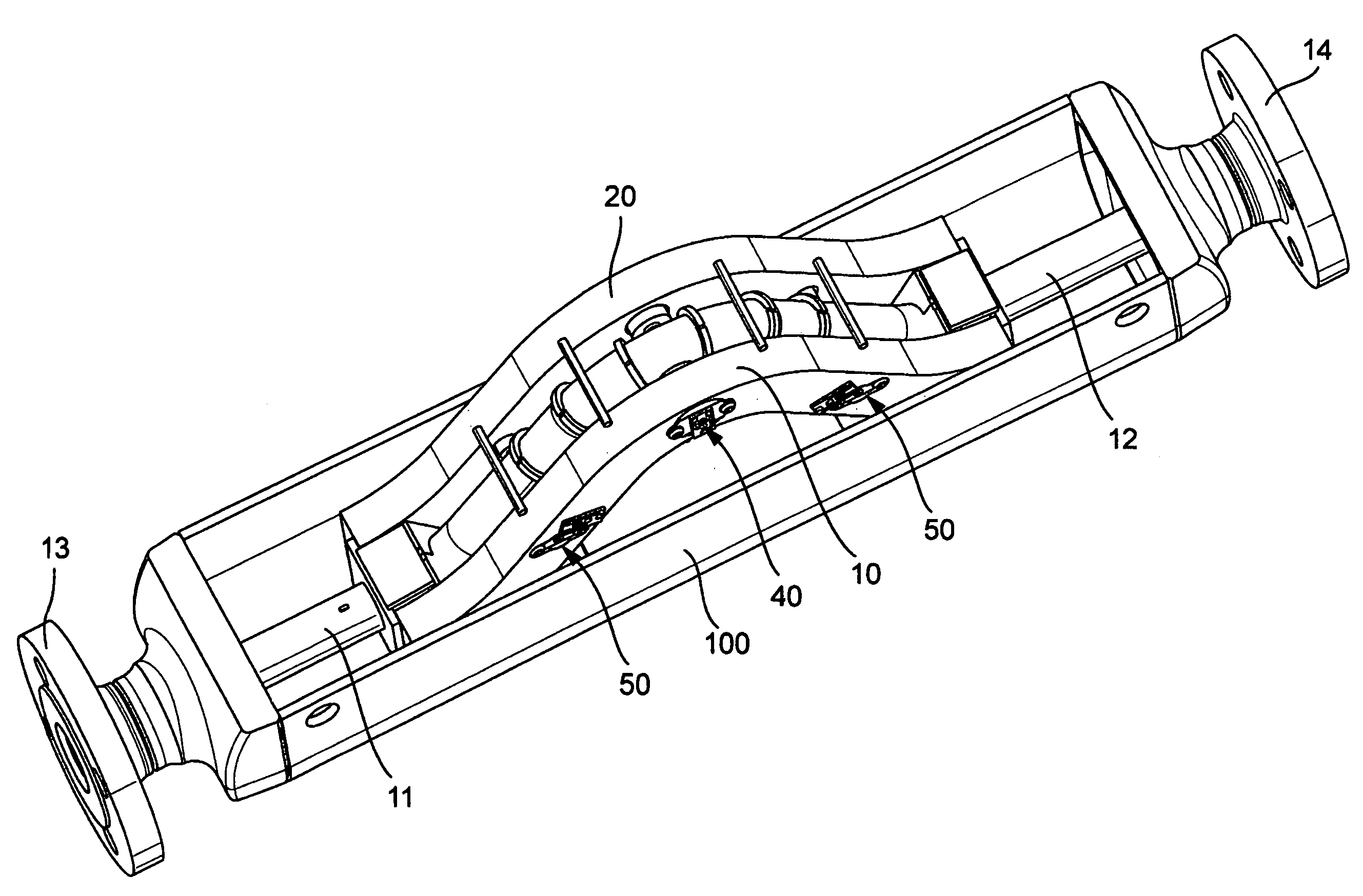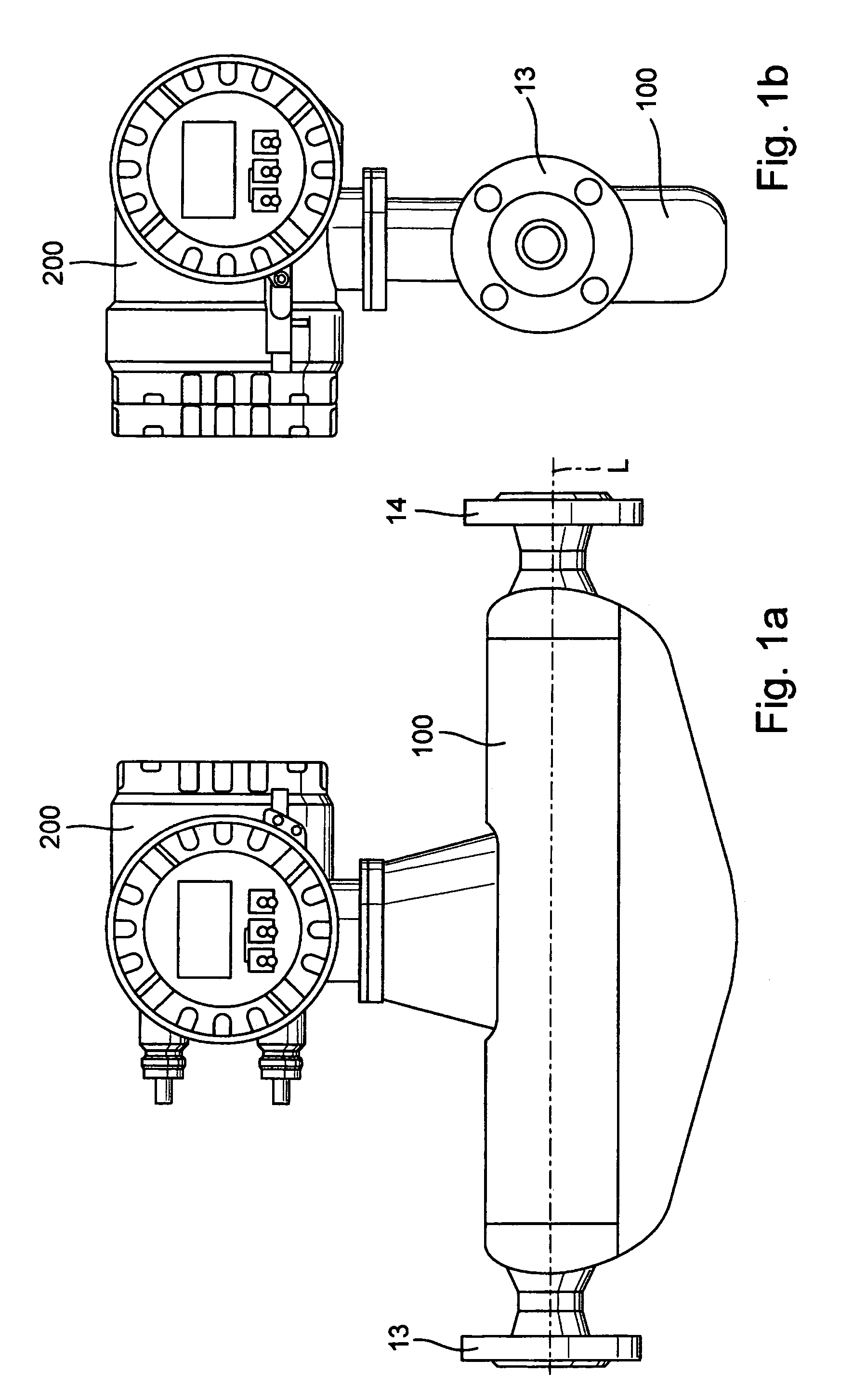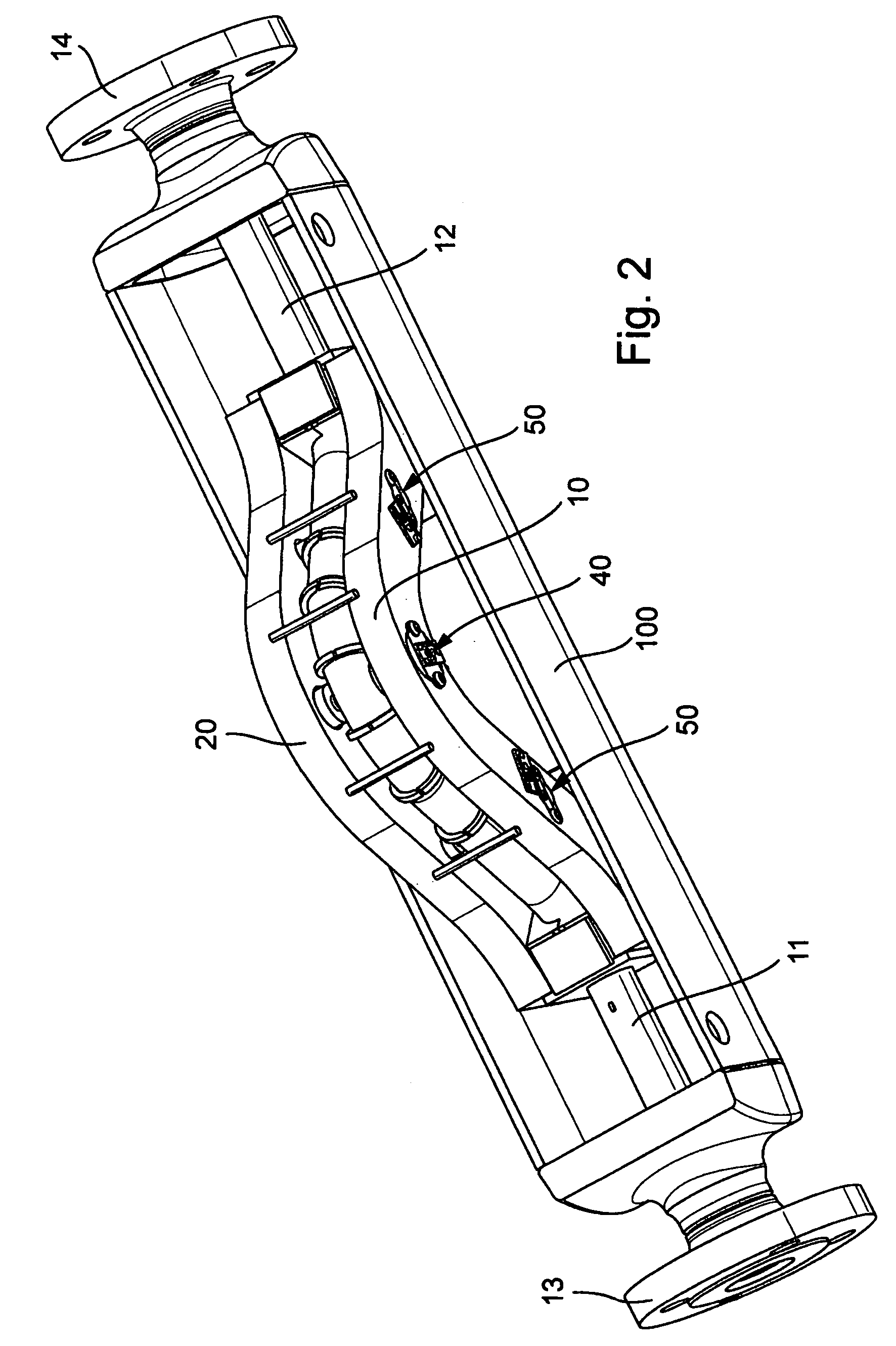Measuring transducer of vibration-type
a technology of measuring transducers and vibration types, which is applied in the direction of measurement devices, mass flow measurement devices, instruments, etc., can solve the problems of high material cost and usually also higher processing cost, complicated manufacturing, and inability to measure the accuracy of the respective inline measuring device significantly fluctuating, so as to improve the mechanical structure of measuring transducers and low complexity
- Summary
- Abstract
- Description
- Claims
- Application Information
AI Technical Summary
Benefits of technology
Problems solved by technology
Method used
Image
Examples
Embodiment Construction
[0043]While the invention is susceptible to various modifications and alternative forms, exemplary embodiments thereof have been shown by way of example in the drawings and will herein be described in detail. It should be understood, however, that there is no intent to limit the invention to the particular forms disclosed, but on the contrary, the intention is to cover all modifications, equivalents, and alternatives falling within the spirit and scope of the invention as defined by the intended claims.
[0044]Shown in FIGS. 1a, b is an inline measuring device, for example, one embodied as a Coriolis mass flow measuring device, density measuring device, viscosity measuring device, or the like, installable into a pipeline, for example, a process line of an industrial plant. The inline measuring device serves for measuring and / or monitoring at least one parameter, for example, a mass flow, a density, viscosity, etc., of a medium flowing in a pipeline. The inline measuring device include...
PUM
 Login to View More
Login to View More Abstract
Description
Claims
Application Information
 Login to View More
Login to View More - R&D
- Intellectual Property
- Life Sciences
- Materials
- Tech Scout
- Unparalleled Data Quality
- Higher Quality Content
- 60% Fewer Hallucinations
Browse by: Latest US Patents, China's latest patents, Technical Efficacy Thesaurus, Application Domain, Technology Topic, Popular Technical Reports.
© 2025 PatSnap. All rights reserved.Legal|Privacy policy|Modern Slavery Act Transparency Statement|Sitemap|About US| Contact US: help@patsnap.com



